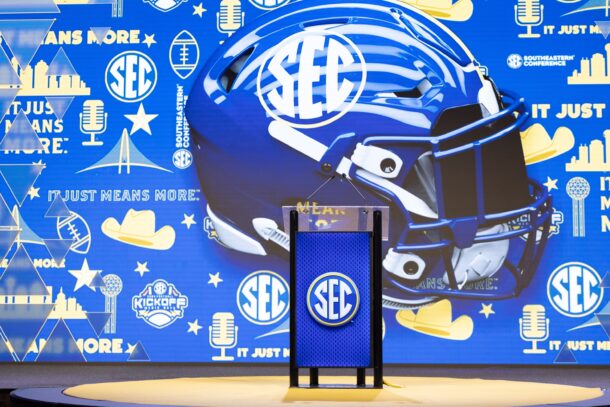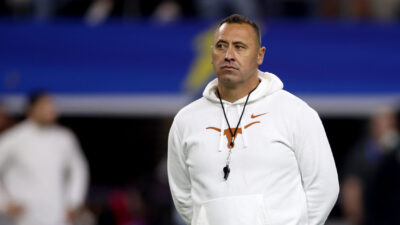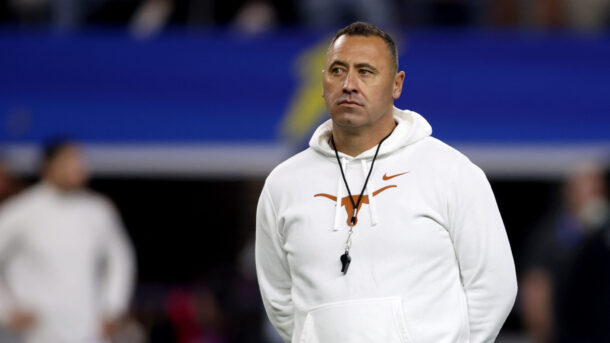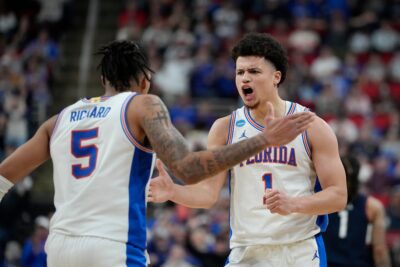Ad Disclosure
TUSCALOOSA, Ala. _ To the casual observer it may have seemed like the University of Alabama’s passing game with senior quarterback Blake Sims was simply screen right and screen left against Florida Atlantic last week.
Part of that was by design, and part of that wasn’t. All that everyone focused on were the final results, including catch-and-run touchdowns by wide receiver Amari Cooper and running back Kenyan Drake.
“I think that those plays are all based on the look that you get on defense,” Coach Nick Saban said.
The key to understanding Alabama’s somewhat “simplified” offense under coordinator Lane Kiffin is knowing that the most important pre-snap call the quarterback makes is usually the formation. Once everyone gets lined up and can see the defense there’s only a simple adjustment to be made.
“They’re kind of option plays,” senior tackle Austin Shepherd said. “You can run or pass it. We’re blocking the run. If they’re loading the box we’re going to split the ball out. We just run our run play like we’re supposed to and if the ball goes out there we just run down the field and try to protect the receiver.”
The approach also helps explain how Sims got into a better groove against West Virginia the week before. When he wasn’t getting everyone in and out of the huddle and lined up in time to make both the read and adjustments with time to spare the offense ran into problems. So with the no-huddle approach he got to the line without being rushed and things clicked a lot better.
Junior quarterback Jacob Coker also had some trouble during his first game with significant playing time. When Alabama had the ball at the FAU 3-yard line with 7 seconds remaining until halftime he didn’t get the right formation called and when the play broke down he free-lanced. The result was a blown opportunity as time expired due to the Crimson Tide’s only sack allowed so far.
“It’s like what we are use to in the past, even though it may not seem that way,” senior tight end Brian Vogler said. “I think he’s trying to get both quarterbacks comfortable with two guys who don’t have too much when-the-game-matters experience. He’s trying to get them comfortable and the screen has been working really well for us.”
Another factor is that Kiffin has the reputation for going to the hot reads, although that too is something that Alabama’s been doing for a while. Fans may just not have recognized it because the plays come with what Saban calls “window dressing.”
In other words the setup and presentation may be different, but at its core the play is the exact same thing.
“Any time you go back and look at games, not this season, we’ll run plays over and over again because they just work,” Vogler said. “I remember in the SEC Championship against Georgia we ran the same play six times in a row because it worked.
“If something is working for us we are going to use it the rest of the game.”
So far it’s hard argue with the results, even though the coaches really haven’t worked the tight ends into the passing game yet.
Through two games the Crimson Tide is averaging 579 yards of total offense, including 340 passing. Even more eye opening, though, has been the 152 snaps even with last week’s game being called midway through the fourth quarter due to inclement weather.
The 82 offensive plays in the season opener against West Virginia were the second most during the Saban era at Alabama, trailing only the 84 against Tennessee in 2007. That’s also when the Crimson Tide had the most snaps in consecutive games, 164 against Ole Miss (80) and Tennessee.
Alabama averaged 63.5 offensive plays per game last season.
Going back to the screens, given the setup they’re not as easy to stop as one might think, especially when Cooper is the target, the other wide receivers have done a good job of blocking, and Sims has a quick release.
“It’s definitely tough, especially in man because you are so focused on him you really don’t see the blocker coming out there to kind of shove you off,” junior cornerback Cyrus Jones said. “It’s definitely a tough play to defend, and definitely when you have a great athlete like Amari running the play, it makes it even tougher.”
The other problem for defenses is that they really can’t cheat other players over to help without taking huge risks. So the play essentially becomes a one-on-one matchup with Cooper, or whomever else is catching the ball. Alabama is going to take that matchup almost every time.
“I think you have to respect who you have in the backfield,” Vogler said. “You can’t leave the box empty against a guy like T.J. Yeldon, Kenyan Drake or Derrick Henry. You have to respect that and it gives us opportunities on the outside.”
This is also just the starting point. Should a defense make an adjustment, Kiffin can do the same in turn, and the chess match between the coaches can go on throughout the game. Considering the Crimson Tide’s talent, though, one has to like the chances of eventually breaking an explosive play – the kind that can turn the momentum in a game.
Saban defines an explosive play a run of 13 yards or more, or a pass of 17 yards or more. Last season the Crimson Tide averaged 8.5 per game. So far this season it’s up to 13.
“I think there’s a lot left on the table we can show,” Vogler said. “I think the coaches are saving that up to work on a different defense. We put in a lot of stuff. We take certain stuff out against certain defenses. We game plan around it. There’s a lot of stuff still out there. The coaches are just waiting to use it.”
Christopher Walsh has covered Alabama football since 2004 and is the author of 19 books. In his free time, he writes about college football.




